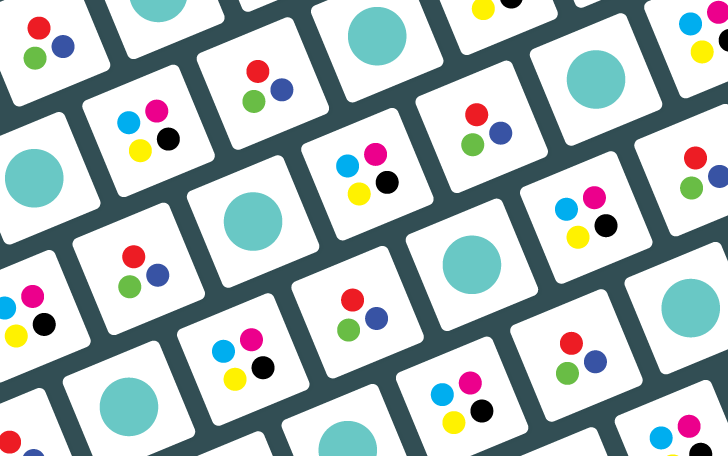Let’s talk Color: A simple guide to color spaces

Here’s a hypothetical for you: You’ve been working with us on a logo for your business. We’ve gone through the design process and arrived at a beautiful & thoughtful mark that reflects your unique characteristics. Awesome! What happens next?
We’ll prepare your logo in a variety of color spaces: RGB, CMYK, and Pantone. These color spaces are used in different contexts, and choosing the right file type for your needs depends on a few factors. It may seem confusing at first, but with some basic information, you’ll know everything you need to get by. Let’s break it down:
RGB
All RGB colors are made by mixing varying amounts of red, green, and blue light. You should use RGB files in any digital or screen-based context. This includes websites, email blasts, digital banner ads, and tv spots.
CMYK
All CMYK colors are made from varying amounts of cyan, magenta, yellow, and black ink. You should use CMYK files in any physical or print-based context. This includes business cards, letterheads, and brochures to name a few. CMYK is often referred to as four-color printing and is the most common (and usually the most economical) method of producing physical pieces.
Pantone
All Pantone colors are made from a combination of base pigments mixed in specified amounts. You should use Pantone files in any physical or print-based context where color accuracy is imperative. Pantone is often referred to as spot color printing, and its main benefit is consistency and predictability — a Pantone color will always look the same, regardless of vendor and production technique. Pantone Coated colors are used for glossy surfaces, and Pantone Uncoated colors are used for matte surfaces.
Bam! Now you’re a color space expert! Well, maybe expert is a stretch, but you should know pretty much everything you need to in order to use your logo effectively. However, if you ever feel like you’re out of your depth when it comes to color, don’t hesitate to contact us here at RBA.
If you want to know more about us, you can jump over here. If you’d like to see what we do, you can always jump over there.



